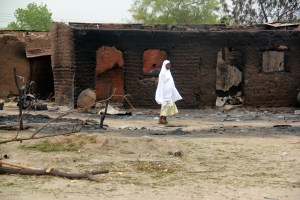Since 2009, the Islamist group known as Boko Haram has ushered in a wave of violence across the Lake Chad Basin region of West Africa, at the intersection of Nigeria, Niger, Chad, and Cameroon. Among other tactics that it has employed during its reign of terror, the group has been noted for its use of suicide bombers. While the prevalence of suicide bombings has been duly recognized, little remains known about the broader arc of their existence and efficacy: What strategic and operational trends underlie Boko Haram’s use of suicide bombers, and how effective have they been at achieving their objectives? Just who are Boko Haram’s suicide bombers? Where are they deployed, what do they target, and how do different bomber demographics differ in their actions? More broadly, what does Boko Haram’s use of suicide bombers reveal about the past, present, and future of the terrorist group?
Drawing on analysis of an original dataset of all Boko Haram suicide bombings from their first deployment in April 2011 to June 2017, this report presents the fullest picture available to date that tracks and analyzes Boko Haram’s use of suicide bombers. To do so, the authors investigate two main phenomena from the dataset: operational trends of bombers (longitudinal trends, lethality, injuries, geography, and targeting trends) and demographic trends of bombers (gender, age, and recruitment). From these trends, the authors assert that it is possible to categorize Boko Haram’s suicide bombing efforts into four distinct historical phases. In light of their understanding of the group’s past and present operational and demographic trends, the authors conclude by suggesting how the group might act in the future and how counterterrorism efforts might best address its likely incarnations.
 Skip to content
Skip to content

